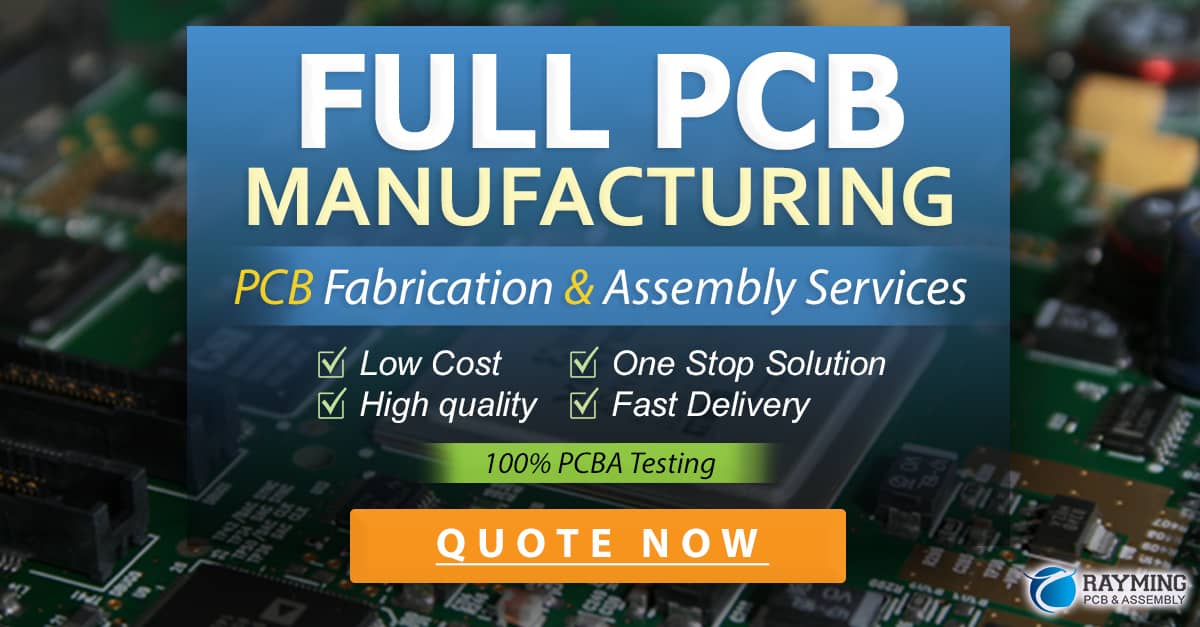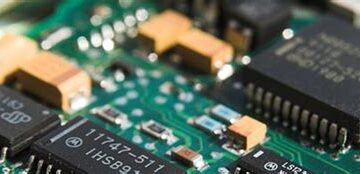Introduction to Copper Through-Hole Filling in IC Substrates
In the world of integrated circuit (IC) substrate design, copper through-hole filling has become an essential process for creating reliable and high-performance electronic devices. As the demand for smaller, faster, and more efficient electronic components continues to grow, the need for advanced copper through-hole filling techniques has become increasingly important.
Copper through-hole filling is a process in which copper is deposited into the small holes or vias that are drilled through the layers of an IC substrate. These vias provide electrical connections between the different layers of the substrate, allowing signals and power to be transmitted throughout the device. The quality and reliability of these connections are critical to the overall performance of the electronic component.
Traditional Copper Through-Hole Filling Methods
Traditionally, copper through-hole filling has been achieved through a multi-step process that involves several distinct stages. These stages typically include:
- Drilling the through-holes or vias into the substrate
- Cleaning and preparing the surface of the holes
- Applying a seed layer of copper to the walls of the holes
- Electroplating copper onto the seed layer to fill the holes
- Planarizing the surface of the substrate to remove excess copper
While this multi-step process has been widely used in the industry, it has several limitations that can impact the quality and reliability of the final product. These limitations include:
- Long processing times due to the multiple steps involved
- Increased risk of defects and inconsistencies in the copper filling
- Higher production costs associated with the multiple processing stages
- Difficulty in achieving uniform and complete filling of high aspect ratio through-holes
To address these limitations, researchers and industry experts have been exploring new and innovative approaches to copper through-hole filling.
The Single Step Copper Through-Hole Filling Process
One of the most promising developments in copper through-hole filling technology is the single step process. This innovative approach aims to simplify and streamline the filling process by combining multiple steps into a single, unified operation.
How the Single Step Process Works
The single step copper through-hole filling process typically involves the following key components:
- A specially formulated copper electrolyte solution
- A modified electroplating system with advanced controls and monitoring capabilities
- Optimized process parameters such as current density, temperature, and agitation
In this process, the substrate with the drilled through-holes is immersed in the copper electrolyte solution. The advanced electroplating system then applies a carefully controlled electrical current to the substrate, causing the copper ions in the solution to be reduced and deposited onto the walls of the through-holes.
The key to the success of this process lies in the optimization of the electrolyte composition and the electroplating parameters. By carefully tuning these factors, it is possible to achieve uniform and complete filling of the through-holes in a single step, without the need for additional seed layers or post-processing steps.
Advantages of the Single Step Process
The single step copper through-hole filling process offers several significant advantages over traditional multi-step methods:
-
Reduced processing time: By combining multiple steps into a single operation, the single step process can significantly reduce the overall processing time for copper through-hole filling. This can lead to increased production throughput and lower manufacturing costs.
-
Improved filling quality: The optimized electrolyte composition and advanced process controls used in the single step process can help to ensure more uniform and complete filling of the through-holes. This can lead to improved electrical performance and reliability of the final product.
-
Increased design flexibility: The ability to fill high aspect ratio through-holes in a single step can enable designers to create more complex and advanced IC substrate designs. This can open up new possibilities for miniaturization and performance enhancement in electronic devices.
-
Cost savings: By reducing the number of processing steps and improving the overall efficiency of the filling process, the single step method can help to lower production costs and increase profitability for manufacturers.
Case Studies and Research on Single Step Copper Through-Hole Filling
To better understand the potential benefits and challenges of the single step copper through-hole filling process, let’s take a look at some recent case studies and research in this area.
Case Study 1: High Aspect Ratio Through-Hole Filling
In a study published in the Journal of The Electrochemical Society, researchers investigated the use of a single step copper through-hole filling process for high aspect ratio (HAR) vias. HAR vias, with aspect ratios greater than 10:1, are particularly challenging to fill uniformly and completely using traditional methods.
The researchers used a modified electrolyte composition and optimized electroplating parameters to achieve complete filling of HAR vias with aspect ratios up to 15:1. The resulting copper filling showed excellent uniformity and adhesion, with no voids or defects observed.
This case study demonstrates the potential of the single step process to enable the reliable filling of even the most challenging through-hole geometries, paving the way for more advanced IC substrate designs.
Case Study 2: Improving Electroplating Efficiency
Another study, published in the Journal of Applied Electrochemistry, focused on improving the efficiency of the single step copper through-hole filling process through the use of advanced electroplating systems and process controls.
The researchers used a modified electroplating setup with real-time monitoring and feedback controls to optimize the current density, temperature, and agitation during the filling process. By dynamically adjusting these parameters based on the real-time monitoring data, they were able to achieve faster and more uniform filling of the through-holes.
The results showed a significant improvement in electroplating efficiency, with filling times reduced by up to 30% compared to traditional methods. This highlights the potential for further optimization and enhancement of the single step process through the use of advanced process control technologies.
Research on Alternative Electrolyte Compositions
In addition to process optimization, researchers are also exploring the use of alternative electrolyte compositions to improve the performance of the single step copper through-hole filling process.
One promising approach involves the use of organic additives in the electrolyte solution. These additives can help to modify the deposition characteristics of the copper, promoting more uniform and conformal filling of the through-holes.
For example, a study published in the Journal of The Electrochemical Society investigated the use of polyethylene glycol (PEG) as an additive in the copper electrolyte. The results showed that the addition of PEG helped to suppress the formation of voids and improve the overall uniformity of the copper filling.
Other research has focused on the use of alternative copper salts, such as copper methanesulfonate, in the electrolyte solution. These alternative salts can offer improved solubility and conductivity compared to traditional copper sulfate-based electrolytes, potentially enabling faster and more efficient filling of the through-holes.

Challenges and Future Directions for Single Step Copper Through-Hole Filling
While the single step copper through-hole filling process offers significant potential benefits for IC substrate design and manufacturing, there are still some challenges and areas for further development.
One key challenge is the need for careful control and optimization of the electroplating parameters to ensure consistent and reliable results. This requires advanced process monitoring and control systems, as well as skilled operators and engineers to oversee the process.
Another challenge is the potential for defects or non-uniformities in the copper filling, particularly in complex or high aspect ratio through-hole geometries. Researchers are continuing to investigate ways to improve the robustness and reliability of the single step process, through the use of advanced electrolyte compositions, process controls, and post-processing techniques.
Looking to the future, there are several exciting directions for further development and optimization of the single step copper through-hole filling process. These include:
-
Integration with other advanced manufacturing technologies, such as 3D printing or laser drilling, to enable even more complex and high-performance IC substrate designs.
-
Development of new electrolyte compositions and additives to improve the speed, uniformity, and reliability of the filling process.
-
Application of machine learning and artificial intelligence techniques to optimize process parameters and improve quality control.
-
Exploration of alternative materials, such as copper alloys or other conductive metals, for through-hole filling applications.
As the demand for high-performance electronic devices continues to grow, the development and optimization of advanced copper through-hole filling processes will remain a critical area of focus for researchers and industry experts alike.
Frequently Asked Questions (FAQ)
- What is copper through-hole filling, and why is it important in IC substrate design?
-
Copper through-hole filling is a process in which copper is deposited into the small holes or vias drilled through the layers of an IC substrate. These filled vias provide electrical connections between the different layers, allowing signals and power to be transmitted throughout the device. The quality and reliability of these connections are critical to the overall performance of the electronic component.
-
How does the single step copper through-hole filling process differ from traditional multi-step methods?
-
The single step process combines multiple stages of the traditional method into a single, unified operation. This is achieved through the use of a specially formulated copper electrolyte solution, a modified electroplating system, and optimized process parameters. By combining these steps, the single step process can reduce processing time, improve filling quality, and increase design flexibility.
-
What are some of the key advantages of the single step copper through-hole filling process?
-
The single step process offers several advantages, including reduced processing time, improved filling quality, increased design flexibility, and cost savings. By simplifying and streamlining the filling process, the single step method can help to improve the overall efficiency and profitability of IC substrate manufacturing.
-
What are some of the challenges associated with the single step copper through-hole filling process, and how are researchers working to address these challenges?
-
One key challenge is the need for careful control and optimization of the electroplating parameters to ensure consistent and reliable results. Another challenge is the potential for defects or non-uniformities in the copper filling, particularly in complex or high aspect ratio through-hole geometries. Researchers are investigating ways to improve the robustness and reliability of the single step process through the use of advanced electrolyte compositions, process controls, and post-processing techniques.
-
What are some of the future directions for research and development in single step copper through-hole filling technology?
- Future directions for research and development include integration with other advanced manufacturing technologies, development of new electrolyte compositions and additives, application of machine learning and artificial intelligence techniques for process optimization, and exploration of alternative materials for through-hole filling applications. As the demand for high-performance electronic devices continues to grow, the development and optimization of advanced copper through-hole filling processes will remain a critical area of focus for researchers and industry experts.



0 Comments